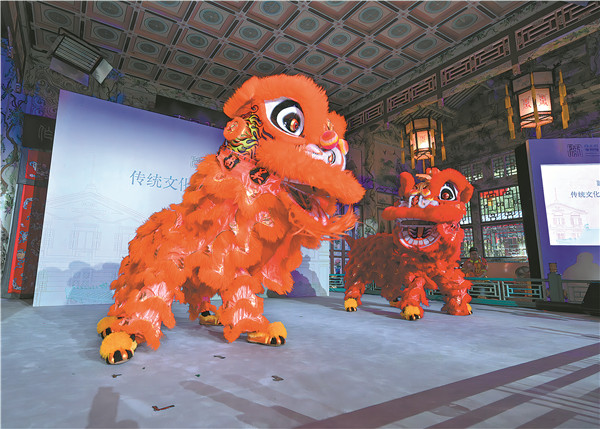

In September, Prince Kung's Palace Museum launched a plan to promote the dissemination of traditional Chinese culture in Beijing and Macao.
It centers on traditional culture with a contemporary expression, and aims to integrate traditional cultural elements with modern life through innovative contemporary design, fostering public interest and recognition of traditional culture.
The museum will draw on the successful redesign of its Anshantang Hall to create two interconnected cultural spaces — one in the museum itself, and the other in Macao's Ma Kok district.
Last year, cultural elements related to blessings and the 24 solar terms were added to the hall to convey the harmony between heaven, earth, and humanity, and to showcase distinctive cultural and creative products from the museum's collection.
Feng Nai'en, director of the museum, says that they are working to create a platform to bring traditional Chinese culture to a wider audience through exchange, mutual learning, and innovation.
The two spaces will be rooted in the historical and cultural heritage of both the palace and Macao.
The initiative seeks to promote the transmission and development of Chinese culture, enhance cultural exchanges between the mainland and Macao, and support the dissemination of Chinese culture, according to the authorities.
Additionally, both sides will promote intangible cultural heritage by organizing a variety of traditional cultural experience activities, such as intangible cultural heritage workshops, lectures, forums, and salons. The initiatives are designed to enhance the public's understanding and engagement with traditional Chinese culture.
Pansy Ho Chiu-king, global ambassador for the promotion of the Qiandongnan Miao embroidery industry and a member of the 14th National Committee of the Chinese People's Political Consultative Conference, says that the cultural promotion plan emphasizes innovation as its guiding principle, leveraging the century-old heritage and rich cultural legacy of Prince Kung's Palace Museum.
She says the goal is to help lend traditional Chinese culture a more international, lifestyle-oriented, and fashionable form, while boosting its influence.
Yet, it's not the first cooperative effort between Macao and the mainland to promote intangible cultural heritage.